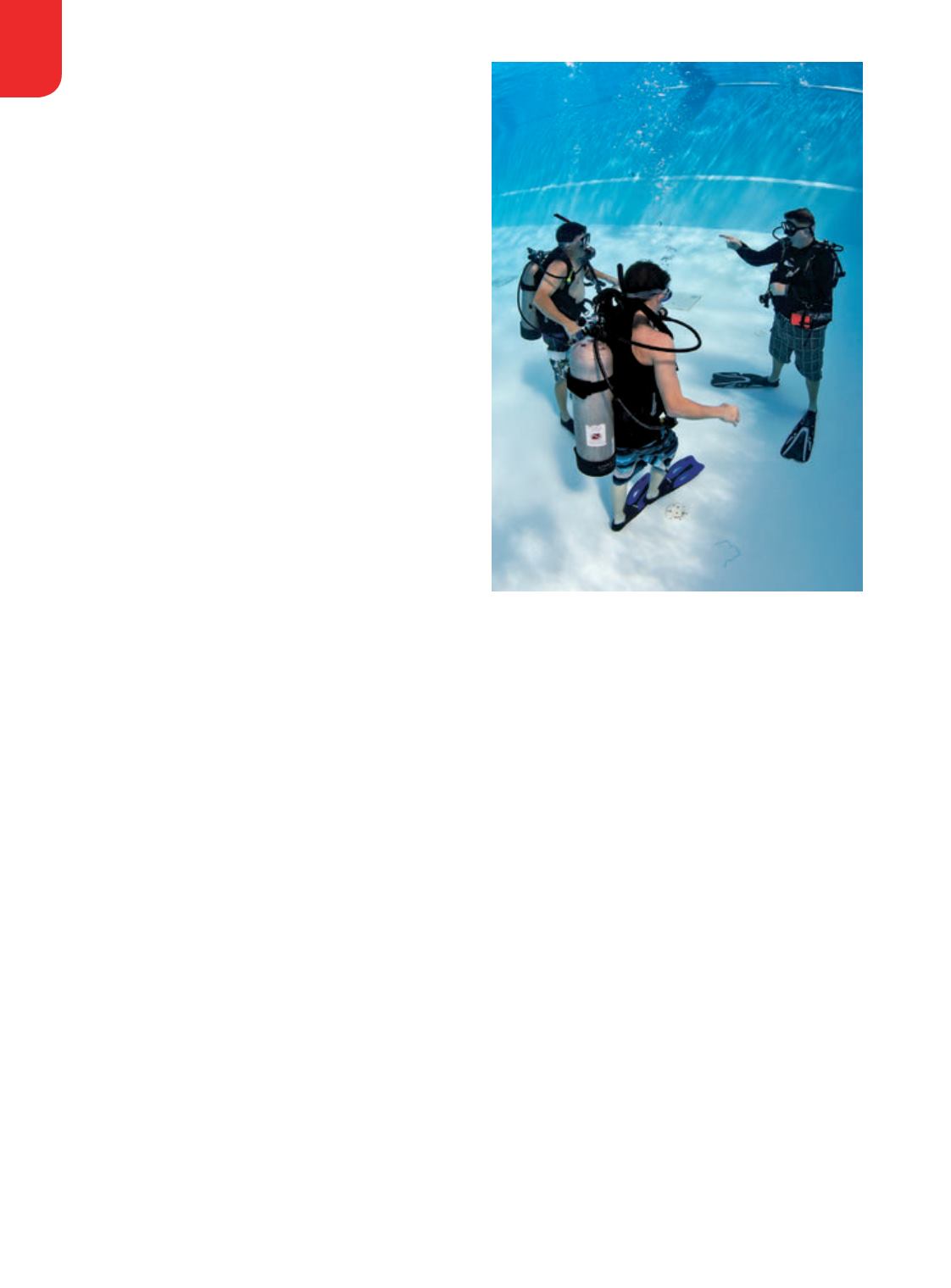

Q:
I’m a dive instructor, and I occasionally
have student divers who wonder if they
need to follow the flying-after-diving
recommendations after just being in the pool.
A:
Flying or travel to altitude after diving is a
consideration for many divers, so it is great
that the question is being asked. Fortunately,
a typical shallow, low-workload, pool-diving exposure
would be of minimal concern, particularly when the
time is split between the bottom and the surface
and the cumulative total underwater time is modest.
This is a great opportunity, however, to reinforce an
understanding of dive tables.
You can reference the
U.S. Navy Diving Manual
(USN 2008) for this guidance. An actual bottom time
(the time from leaving the surface to the point of
direct ascent to a stop depth or the surface) of 61-88
minutes at 15 feet of seawater (fsw) would put a diver
in repetitive group C (Table 9-7). C is the maximum
repetitive group allowed for immediate exposure to an
altitude of 8,000 feet (Table 9-6). A maximum depth of
10 fsw would require an actual bottom time of 102-158
minutes to put a diver in repetitive group C.
Any delay between exiting the water and travel to
altitude would provide an additional safety buffer as
the diver offgases. Conversely, deeper dive depths, high
underwater workloads and/or travel to higher altitudes
would require greater conservatism.
Practically speaking, a 60-minute pool session in
a 10- to 12-foot-deep pool would offer little concern
for typical pressurized aircraft cabin altitudes (usually
6,000-8,000 feet altitude equivalent) or unpressurized
flight or driving to a similar actual altitude. Following
the flying-after-diving guidelines recommended for
recreational diving would not be necessary for this (or
lesser) exposure.
For completeness, the flying-after-diving guidelines
for recreational diving call for a minimum 12-hour
surface interval (SI) after single no-decompression
dives, an 18-hour SI after multiple dives per day or
multiple consecutive days of diving, and a “substantially
longer” than 18-hour SI after decompression dives
(Sheffield and Vann 2004). The “substantially longer”
text was used to acknowledge the fact that we did not
have sufficient data for precise recommendations,
but it is a common rule of thumb that a 24-hour SI is
desirable for decompression dives.
The DAN® flying-after-diving guidelines are applied
to the altitude range of 2,000-8,000 feet. Exposures to
altitudes below this range are ignored, and exposures
to greater altitudes are not recommended after diving
until all excess inert gas is eliminated. In comparison,
the U.S. Navy uses 1,000 feet as the threshold for
altitude exposure. An interesting fact is that the U.S.
Navy tables rely on most of the same data used to
generate the DAN guidelines. The specific guidance
for different exposure profiles is primarily based on
mathematical manipulation of the same data, not
additional experimental data.
— Neal W. Pollock, Ph.D.
References
Sheffield P, Vann RD, eds. DAN Flying After Diving Workshop
Proceedings. Durham, NC: Divers Alert Network, 2004.
U.S. Navy Diving Manual, Volume 2, Revision 6. NAVSEA 0910-
LP-106-0957. Washington, DC: Naval Sea Systems Command,
2008: Chapter 9.
STEPHEN FRINK
RESEARCH, EDUCATION & MEDICINE
FROM THE MEDICAL LINE
Flying After
Pool Diving
DAN MEDICS AND RESEARCHERS
ANSWER YOUR QUESTIONS
ABOUT DIVE MEDICINE.
60
|
WINTER 2017


















